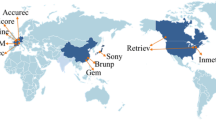Abstract
Although titanium has attractive properties that can improve the performance and economy of automobiles, at its current cost, it cannot compete with steel in most applications for which it is suited. It is readily apparent that titanium cannot be considered a viable mass-market automotive materials alternative as long as it is produced with the Kroll process. A look at existing and new technologies (as well as some that have been found lacking) in terms of applicability toward high-volume, low-cost titanium production for automotive applications indicates other options.
Similar content being viewed by others
References
A.M. Sherman, C.J. Sommer, and F.H. Froes, “The Use of Titanium in Production Automobiles: Potential and Challenges,” JOM, 49 (5) (1997), pp. 38–41.
A.M. Sherman and J.E. Allison, “Potential for Automotive Applications of Titanium Alloys,” SAE Pub. 860868 (Warrendale, PA: SAE, 1986), pp. 1–12.
A. Sherman, “What Industry Needs” (final report from the Titanium Industry Workshop) (Washington, D.C.: ASME, 1997), pp. 91–104.
J.L. Henry et al., “Bureau of Mines Development of Titanium Production Technology,” BuMines Bulletin, 690 (1987), pp. 44–76.
F.H. Hayes et al., “Advances in Titanium Extraction Metallurgy,” JOM, 36 (6) (1984), pp. 70–75.
E.R. Poulsen and J.A. Hall, “Extractive Metallurgy of Titanium: A Review of the State of the Art and Evolving Production Techniques,” JOM, 35 (6) (1983), pp. 60–65.
D.G. Tisdale, J.M. Toguri, and W. Curlook, “The Vapour Phase Production of Titanium,” Titanium ’95, 2 (London: IOM, 1996), pp. 1535–1542.
J.D. Leland, “Economically Producing Reactive Metals by Aerosol Reduction,” JOM, 48 (10) (1996), pp. 52–55.
S.J. Gerdemann, “Continuous Production of Titanium Powder” (final report from the Titanium Industry Workshop) (Washington, D.C.: ASME, 1997), pp. 257–263.
“Direct Reduction Processes for the Production of Titanium Metal,” NMAB-304 (Washington, D.C.: NRC, 1974).
“Cleaner Route to Metal,” Metal Bulletin Monthly (February 1998), p. 65.
W.H. Gauvin and H.K. Choi, Plasmas in Extractive Metallurgy (Pittsburgh, PA: MRS, 1984), pp. 77–89.
D.E. Ballard and D.C. Lynch, “Reduction of Titanium Dioxide in a Nonequlibrium Hydrogen Plasma,” Met. and Mat. Trans. B, 28B (1997), pp. 1069–1080.
M.G. Brown, “Titanium Production in a Plasma Process,” AFWAL-Tr-82-4018 (1992).
“Titanium: Past, Present and Future,” NMAB-392 (Washington, D.C.: NRC, 1983).
C.H. Entrekin and H.R. Harker, “State of the Art in Electron Beam Melting of Titanium,” Titanium ’92, eds. F.H. Froes and I. Caplan (Warrendale, PA: TMS, 1993), pp. 2339–2346.
S.M. Tilmont and H.R. Harker, Maximelt-Axel Johnson Metals’ New Electron Beam Furnace, eds. R. Bakish (Englewood, NJ: Bakish Materials Corp. 1990), pp. 135–145.
S. Tamamoto, “Present Features in Production of Titanium Sponge and Ingot,” Titanium ’92, eds. F.H. Froes and I. Caplan (Warrendale, PA: TMS, 1993), pp. 53–63.
P.G. Clites, “The Inductoslag Melting Process,” BuMines Bulletin. 673 (1982).
D. Larson, “High Temperature Metal Mold Casting” (final report from the Titanium Industry Workshop) (Washington, D.C.: ASME, 1997), pp. 473–491.
Additional information
A.D. Hartman earned his B.S. in chemical engineering at the South Dakota School of Mines and Technology in 1983. He is currently a chemical engineer in the Thermal Treatment Technologies Division at the Albany Research Center, Department of Energy.
S.J. Gerdemann earned his B.S. in engineering science at the University of Virginia in 1976. He is currently a chemical engineer in the Thermal Treatment Technologies Division at the Albany Research Center, Department of Energy. Mr. Gerdemann is a member of TMS.
J.S. Hansen earned his B.S. in metallurgical engineering at Oregon State University in 1972. He is currently a metallurgist in the Thermal Treatment Technologies Division at the Albany Research Center, Department of Energy.
For more information, contact P.C. Turner, Albany Research Center, Department of Energy, 1450 S.W. Queen Avenue, Albany, Oregon 97321; 541-967-5863; fax 541-967-5958; e-mail turner@alrc.doe.gov.
Rights and permissions
About this article
Cite this article
Hartman, A.D., Gerdemann, S.J. & Hansen, J.S. Producing lower-cost titanium for automotive applications. JOM 50, 16–19 (1998). https://doi.org/10.1007/s11837-998-0408-1
Issue Date:
DOI: https://doi.org/10.1007/s11837-998-0408-1




